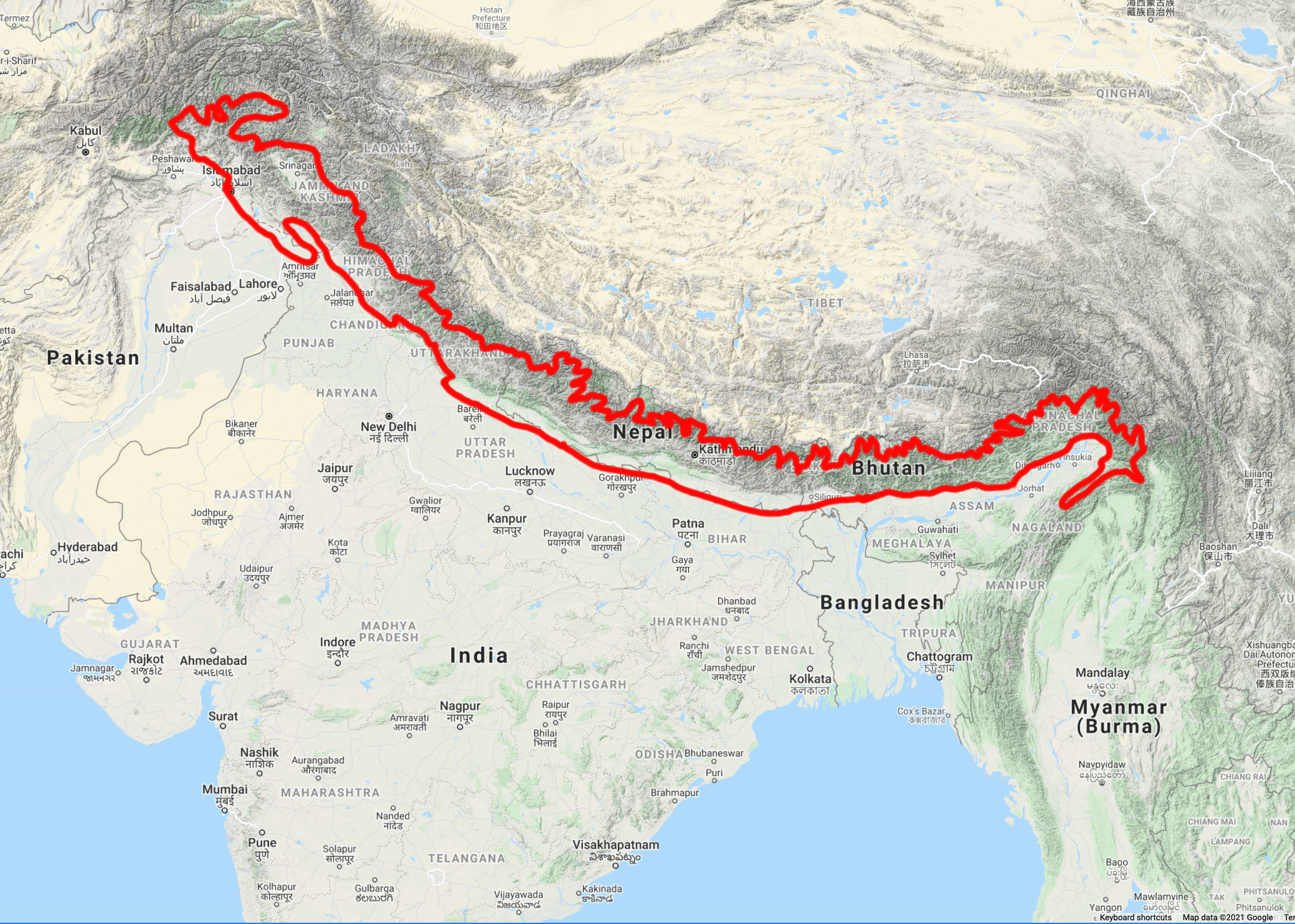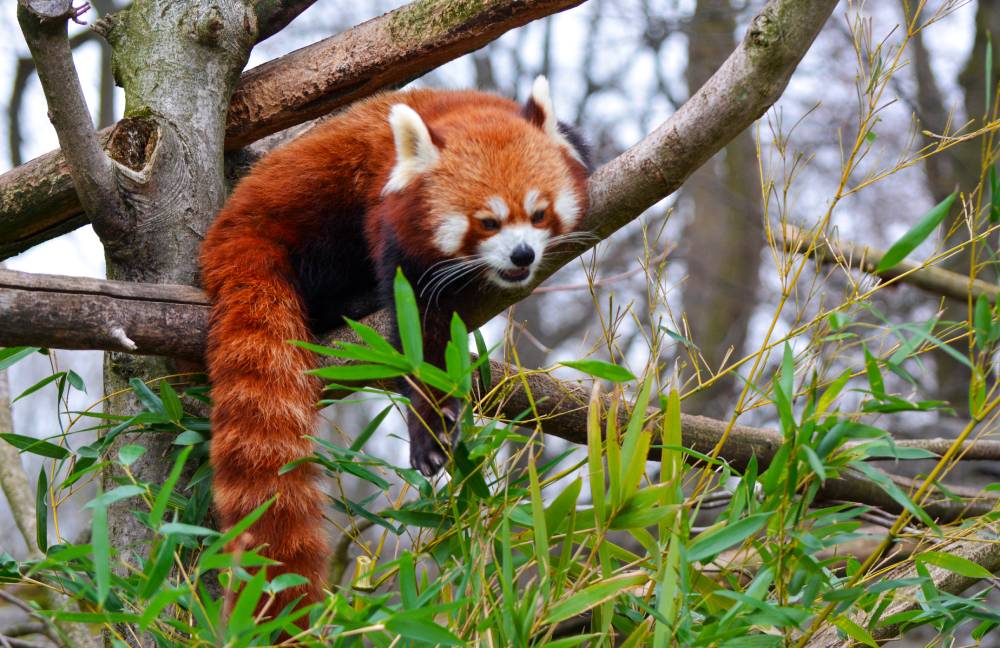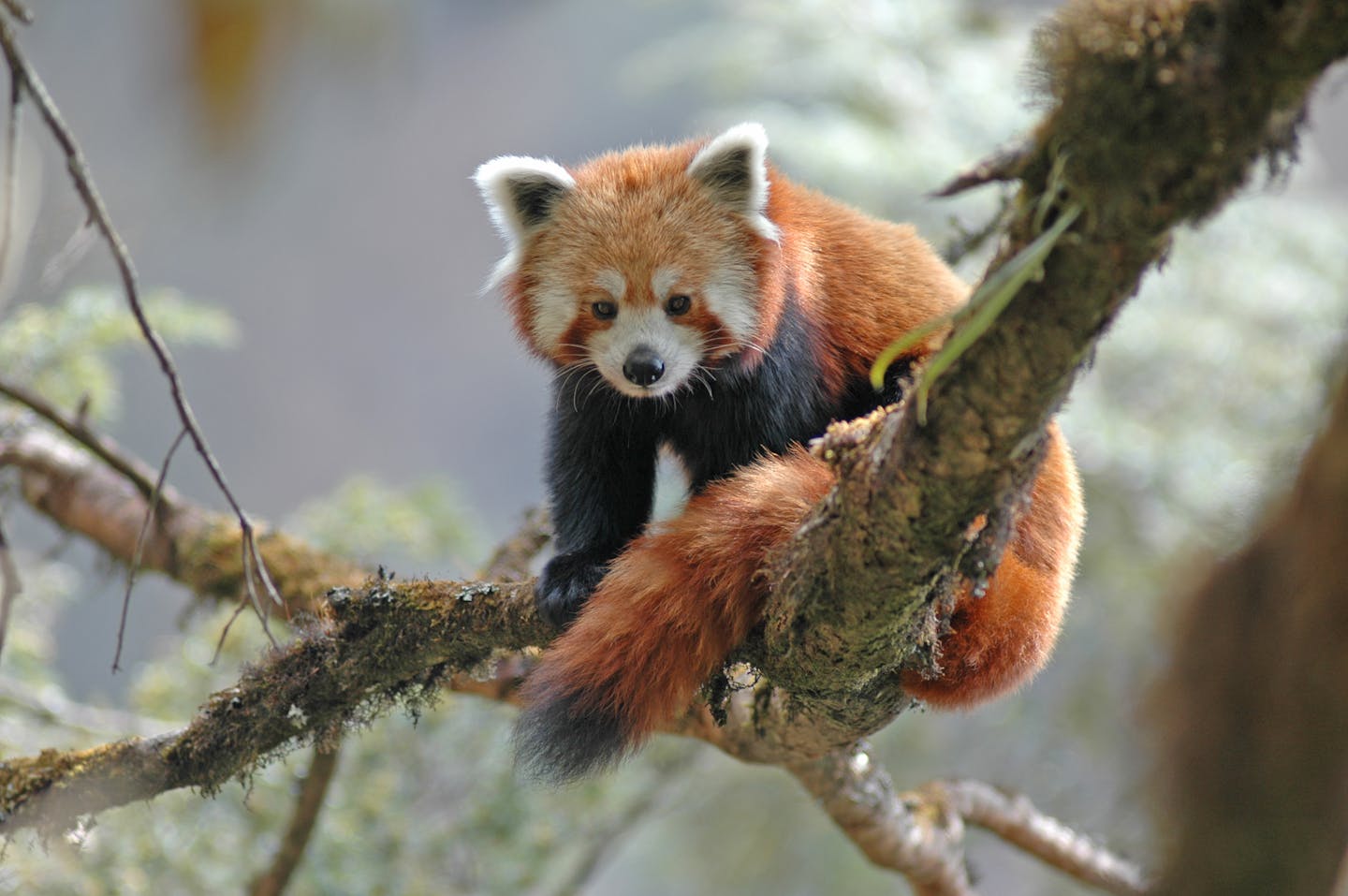Red pandas: adorable gardeners of the bamboo forest
- Nature Conservation
- Land Conservation
- Iconic Species
- Wildlife
- Mammals
- Indian Subcontinent
- Indomalaya Realm
One Earth’s “Species of the Week” series highlights an iconic species that represents the unique biogeography of each of the 185 bioregions of the Earth.
With soft, reddish-brown fur, a face that looks part raccoon, part teddy bear, and adorable videos of their quirky behavior going viral, red pandas are one of the most beloved species on our planet. Native to southwestern China and the eastern Himalayas, they thrive in the conifer forests below the mountains. Also known as the red bear-cat, red cat-bear, and lesser panda, red pandas are not related to giant pandas, cats, or bears. Biologists previously tried placing them in both the bear and the raccoon families, but genetic testing has classified red pandas as their own distinct family, Ailuridae. However, like the giant panda, the name ‘panda’ is said to come from the Nepali word ponya, meaning bamboo or plant eating animal and the red panda alters its ecosystem by doing just that.
Red pandas are about the size of a domestic house cat but with a slightly larger body and immensely thicker coat. Females weigh 3 to 6.0 kg (6.6 to 13.2 lb) and males 3.7 to 6.2 kg (8.2 to 13.7 lb). Like raccoons, each individual red panda has distinct white markings on its face and alternating colored rings on its tail. These bushy tails provide balance, excellent camouflage, and warmth in the winter as they use them to cover themselves like a blanket. Their legs are short and black with thick fur on their paws which helps them grip snow-covered and icy surfaces

The red panda is the Iconic Species of the Himalayan Mixed Forests & Grasslands Bioregion (IM5).
They are solitary and quiet animals except for mating season when red pandas begin to make twittering noises to find each other. Otherwise, they are extremely territorial. The seemingly cute images of two red pandas meeting and standing on their hind legs is actually a warning, not a greeting. It is done to make themselves appear larger and show off the sharp claws on their front paws. Their specialized curved, semi-retractile claws and “false thumb,” which is an extension of the wrist bone, are designed for a life among the trees and for eating bamboo.

Occasionally, their diet consists of small mammals, birds, eggs, flowers, and berries, but 95% of a red panda’s food source is bamboo. Like the giant panda, red pandas cannot digest cellulose, so they must consume a large volume of bamboo to survive. One study found that female red pandas ate approximately 20,000 bamboo leaves in a single day. With this diet, red pandas keep bamboo plants healthy which in turn helps clean our planet’s air. Crucial in the balance of oxygen and carbon dioxide in the atmosphere, a grove of bamboo releases 35% more oxygen than an equivalent grouping of trees.
Fewer than 10,000 mature red pandas live in the wild, listing them as Endangered on the IUCN Red List. Habitat loss and fragmentation due to human development is the primary cause of their decline in population. Yet, their takeover of social media could be what helps them and their habitat recover. As more people like and share images of red pandas across social media, conservation efforts like the Red Panda Project have seen an uptick in their outreach. So, continue to watch red pandas roll in the snow and fall out of trees when they sleep — this awareness could circle back into the next breath you take.
Interested in learning more about the bioregions of Indomayala? Use One Earth's interactive Navigator to explore bioregions around the world.
Launch Bioregion Navigator


